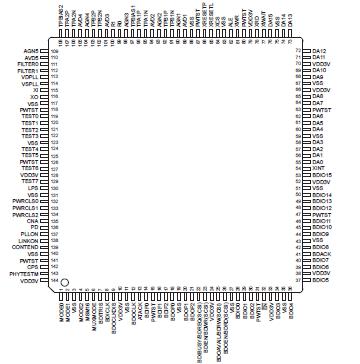TSB43AA82I: Features: • IEEE 1394a-2000 Compliant• Single 3.3-V Supply• Internal 1.8-V Circuit to Reduce Power Consumption• Integrated 400-Mbps Two-Port Physical Layer (PHY)• Inter...
floor Price/Ceiling Price
- Part Number:
- TSB43AA82I
- Supply Ability:
- 5000
Price Break
- Qty
- 1~5000
- Unit Price
- Negotiable
- Processing time
- 15 Days
SeekIC Buyer Protection PLUS - newly updated for 2013!
- Escrow Protection.
- Guaranteed refunds.
- Secure payments.
- Learn more >>
Month Sales
268 Transactions
Payment Methods
All payment methods are secure and covered by SeekIC Buyer Protection PLUS.

 TSB43AA82I Data Sheet
TSB43AA82I Data Sheet








